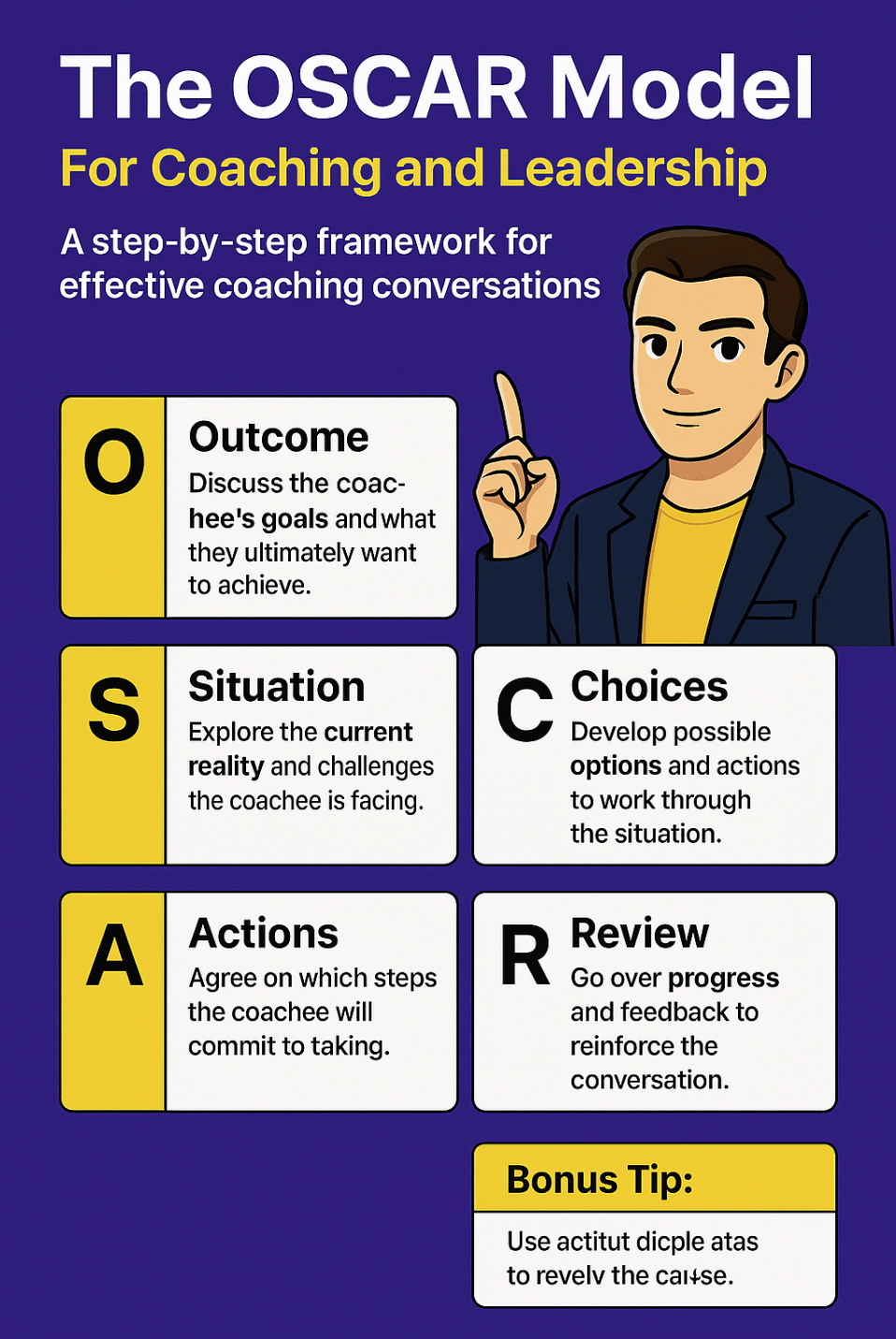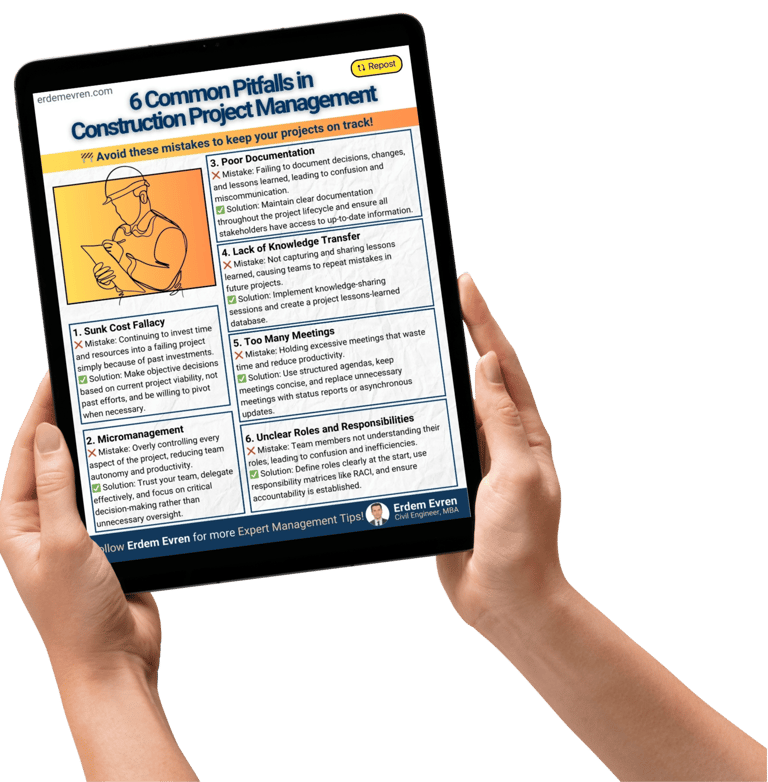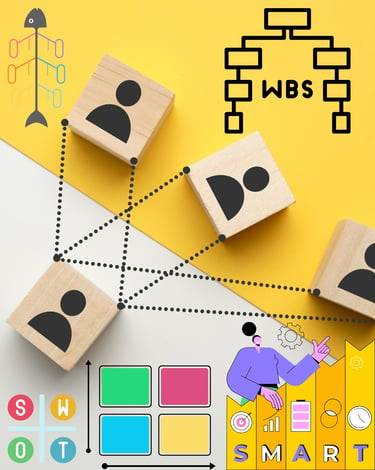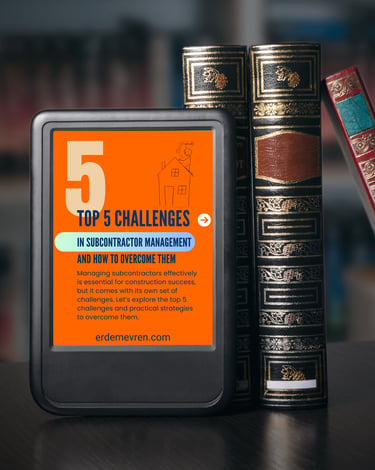BLOG 107 - Navigating Success with the OSCAR Model in Coaching and Leadership
Explore the OSCAR Model—a people-oriented project management framework that blends emotional intelligence with structured decision-making. Learn how this adaptive model boosts collaboration, resilience, and project success in dynamic environments.
by Erdem Evren
15 min read
Have you ever encountered a project management approach that seamlessly integrates emotional intelligence with traditional techniques, significantly boosting project outcomes? Welcome to the OSCAR Model in project management, a novel framework that does precisely that. This article dives into the OSCAR Model, unraveling its components, significance, and practical applications in the ever-evolving realm of project management..
In today's fast-paced and increasingly complex business environment, the demand for more flexible, adaptive, and people-oriented project management methodologies is more critical than ever. The OSCAR Model emerges as a beacon of innovation, offering a fresh perspective that aligns with contemporary project management needs.
The OSCAR Model, standing for Outcome, Situation, Choices, Actions, and Review, represents a significant shift from traditional project management approaches, integrating the principles of solution-focused thinking. This model's roots can be traced back to the fields of positive psychology and coaching, where the emphasis is on building upon strengths and possibilities rather than solely identifying and fixing problems.
In a world where change is the only constant, and the human element of projects is increasingly recognized as a vital success factor, the relevance of the OSCAR Model cannot be overstated. It offers a framework that not only addresses the technical aspects of project management but also places a strong emphasis on the interpersonal dynamics and the psychological well-being of the project team.
The OSCAR Model shines by encouraging project managers and teams to focus on desired outcomes rather than getting bogged down by problems. This outcome-oriented approach fosters a more positive and proactive project environment, leading to enhanced motivation and engagement among team members.
Erdem Evren
With a career in ENR 250 Global Contractor Companies spanning multiple construction projects across Canada, Türkiye, Russia, Saudi Arabia, Kazakhstan, Libya and Azerbaijan, He specializes in construction automation systems, AI integration in project management, and sustainable building practices. Through his blog and professional network, he shares templates, tools, and AI workflows tailored for modern construction needs.
Sign up for emails and be the first to see helpful how-tos, insider tips & tricks, and a collection of templates & tools. Subscribe now.






Civil Engineer, MBA


Table of Content
OUTCOME
SITUATION
CHOICES
ACTIONS
REVIEW
Trends, Challenges, and Opportunities
Practical Applications and Implications
Conclusion
Tips and Tricks
Infographic
OUTCOME
The "Outcome" component prompts teams to define clear, positive, and attainable goals at the outset, serving as a guiding beacon throughout the project lifecycle. This forward-thinking mindset is crucial for maintaining focus and momentum, even when faced with challenges.
Software Development Project: In a software development project aimed at creating a new mobile application, the "Outcome" component could involve setting a clear, positive, and attainable goal such as "Develop a user-friendly mobile application that simplifies online shopping for users aged 18-35, with a seamless checkout process, to be launched within 6 months." This outcome sets a clear direction for the project, focusing on user experience and a specific launch timeframe, guiding the team's efforts and decisions throughout the project lifecycle.
Marketing Campaign Launch: For a marketing team tasked with launching a new product campaign, the "Outcome" could be "Increase brand awareness by 30% and generate 15% more leads than the previous campaign within 3 months, leveraging social media platforms and targeted content marketing." This outcome provides a quantifiable target for brand awareness and lead generation, emphasizing the use of specific channels and strategies, which helps in maintaining focus and measuring progress against set benchmarks.
Corporate Sustainability Initiative: In an initiative to enhance a company's sustainability practices, the "Outcome" might be articulated as "Reduce the company's carbon footprint by 20% and achieve a 25% reduction in waste generation through improved recycling and energy efficiency measures within 12 months." This outcome not only sets specific environmental targets but also aligns with broader corporate social responsibility goals, serving as a motivational and guiding beacon for the team's actions and strategies throughout the initiative.
SITUATION
Understanding the "Situation" involves a comprehensive assessment of the current project landscape, including available resources, constraints, and stakeholders' perspectives. This situational awareness is pivotal for making informed decisions and adapting strategies as the project unfolds.
Understanding the "Situation" component of the OSCAR Model in project management involves a thorough evaluation of the current state of the project. Here are three examples or case scenarios where this aspect is crucial:
1. Tech Startup Launching a New App
Available Resources: A small but skilled development team, limited budget, and access to cloud-based development tools.
Constraints: Tight market entry timeline, emerging competitive solutions, and limited user feedback on the prototype.
Stakeholders' Perspectives: Investors are pushing for a quick launch to capitalize on market trends, while the development team advocates for more testing time to ensure a bug-free user experience.
Adapting Strategies: Based on this assessment, the project manager might prioritize a minimum viable product (MVP) launch to meet investor timelines while planning phased rollouts of additional features. This approach allows for early market entry and user feedback collection, which can guide further development.
2. Construction of a Green Office Building
Available Resources: Experienced construction crew, environmentally sustainable materials, and support from local government for green initiatives.
Constraints: Strict environmental impact regulations, seasonal weather challenges affecting construction timelines, and a fixed budget.
Stakeholders' Perspectives: The client emphasizes the importance of sustainable building practices and energy efficiency, while local authorities require adherence to environmental standards.
Adapting Strategies: The project manager might schedule construction phases to accommodate weather conditions and allocate budget portions strategically to ensure that the most critical sustainable features are implemented without compromising overall project quality.
3. Organization Implementing a New ERP System
Available Resources: A dedicated internal IT team, external ERP implementation consultants, and a comprehensive training program.
Constraints: Operational disruptions during the transition, resistance to change among employees, and data migration challenges.
Stakeholders' Perspectives: Senior management expects efficiency improvements and cost savings, whereas employees are concerned about the learning curve and job impacts.
Adapting Strategies: In this case, the project manager may opt for a phased ERP rollout, starting with less critical departments to minimize operational disruptions and gather insights for smoother transitions in more critical areas. Additionally, implementing a robust change management and training program can address employee concerns and ensure a smoother adaptation to the new system.
CHOICES
"Choices" empowers teams to explore a wide array of potential pathways and solutions, fostering creativity and innovation. This stage is about expanding the horizon, considering various options without prematurely converging on a single solution.
Example 1: Software Development Project
Situation: A software development team is faced with the challenge of improving the user interface of a popular application to enhance user experience and retention rates.
Choices Exploration:
User-Centric Design Workshops: The team considers organizing workshops with actual users to gather feedback on the current interface and suggestions for improvements. This approach ensures that changes are directly informed by user needs and preferences.
Adopting New Technologies: The team explores the possibility of incorporating advanced technologies such as AI and machine learning to create a more intuitive and personalized user interface. This could involve AI-driven suggestions, predictive text input, or automated customer support features.
Incremental A/B Testing: Instead of a complete overhaul, the team contemplates implementing incremental changes through A/B testing. This would allow them to test different interface versions with subsets of users, gathering data on what works best before a full rollout.
Example 2: Marketing Campaign for a New Product Launch
Situation: A marketing team is tasked with launching a campaign for a new product that targets a previously untapped market segment.
Choices Exploration:
Digital Media Blitz: The team thinks about launching an aggressive digital media campaign utilizing social media, influencer partnerships, and targeted ads to create buzz around the new product. This approach leverages the digital savviness of the target market.
Experiential Marketing Events: Considering the novelty of the product, the team explores hosting experiential events where potential customers can interact with the product in real-world settings, thereby creating memorable experiences and word-of-mouth publicity.
Community-based Marketing: Recognizing the importance of community in the new market segment, the team evaluates building a marketing campaign around community engagement, such as sponsoring local events, community contests, and collaborations with local businesses or artists.
Example 3: Manufacturing Process Optimization
Situation: A manufacturing company seeks to optimize its production processes to reduce waste and improve efficiency without compromising product quality.
Choices Exploration:
Lean Manufacturing Implementation: The team contemplates adopting lean manufacturing principles to streamline production processes, reduce waste, and improve efficiency. This might involve mapping out the entire production process, identifying non-value-adding activities, and implementing strategies to minimize or eliminate these inefficiencies.
Advanced Robotics and Automation: The exploration includes investing in advanced robotics and automation technologies to enhance precision and speed in the manufacturing process. This option could significantly reduce human error and increase production capacity.
Employee Training and Engagement Programs: Recognizing the value of human capital, the team considers implementing comprehensive training programs and engagement initiatives to empower employees with new skills and methodologies for continuous improvement, fostering a culture of innovation and efficiency at the grassroots level.
ACTIONS
"Actions" entails the formulation and execution of strategic steps that align with the chosen path forward. This phase is characterized by proactive measures, clear responsibilities, and a strong emphasis on collaboration and communication.
Example 1: Software Development Project
In a software development project, the "Actions" phase might involve the agile methodology's sprint planning and execution. The project team, including developers, designers, and product managers, collaboratively identifies a set of features (aligned with the project's outcomes) to be developed in the next sprint.
Proactive Measures: The team proactively addresses potential bottlenecks, such as dependencies on external APIs, by scheduling tasks to resolve these issues early in the sprint.
Clear Responsibilities: Each team member is assigned specific features or tasks, ensuring clear ownership. For instance, a developer might be responsible for implementing a new authentication feature, while a designer focuses on the user interface for this feature.
Collaboration and Communication: Daily stand-up meetings are held to facilitate open communication, allowing team members to report progress, discuss challenges, and offer assistance to each other.
Example 2: Marketing Campaign
In launching a new product marketing campaign, the "Actions" phase could involve the detailed planning and execution of various marketing strategies to achieve the desired market penetration and customer engagement outcomes.
Proactive Measures: The marketing team might conduct market research and use data analytics to identify target demographics and tailor their messaging accordingly.
Clear Responsibilities: Specific team members are tasked with different aspects of the campaign: one might handle social media engagement, another oversees content creation, and a third manages paid advertising efforts.
Collaboration and Communication: Weekly coordination meetings ensure that all elements of the campaign are aligned and that there is a consistent message across all platforms. The team uses a project management tool to track progress and share updates in real-time.
Example 3: Construction Project
For a construction project, the "Actions" phase involves the meticulous planning and execution of construction activities, ensuring that they align with the project's timeline, budget, and quality standards.
Proactive Measures: The project manager might arrange for the early procurement of critical materials to avoid delays. Risk assessments are conducted to anticipate and mitigate potential issues, such as bad weather or supply chain disruptions.
Clear Responsibilities: Tasks are assigned based on expertise: a site engineer oversees the structural work, a foreman manages the workforce, and a safety officer ensures compliance with health and safety regulations.
Collaboration and Communication: Regular on-site meetings and digital reporting tools keep all stakeholders informed of the project's progress, fostering a collaborative environment where issues are promptly addressed and resolved.
REVIEW
Lastly, the "Review" phase encourages continuous reflection and learning, both during and after the project. This iterative process ensures that lessons are learned, best practices are identified, and improvements are systematically integrated into future projects.
Tech Startup Product Launch Review: A tech startup, following the OSCAR Model for their new product launch, scheduled regular review meetings throughout the project lifecycle. After the product launch, the team conducted a comprehensive review session. They discovered that while their agile development approach allowed for rapid iteration, communication gaps between the development and marketing teams led to some features being underutilized by the target audience. The startup took this learning to systematically revise their cross-departmental communication strategy, ensuring clearer alignment of development efforts with market needs for future projects. This adjustment led to better feature utilization in subsequent releases, enhancing customer satisfaction and product-market fit.
Construction Project Post-Completion Review: A construction company applied the OSCAR Model to a residential building project. In the review phase, conducted after project completion, the team analyzed the project's adherence to timelines and budgets. They identified that certain delays were due to late material deliveries and dependency on specific subcontractors. The company used these insights to develop a more robust supplier and subcontractor evaluation and backup plan, significantly reducing delays in future projects. This proactive approach improved their reputation for reliability and efficiency in the construction industry.
Non-Profit Community Project Review: A non-profit organization utilized the OSCAR Model for a community development project aimed at enhancing local educational facilities. During the review phase, they found that community engagement and feedback were more positive in phases where local volunteers were actively involved in the decision-making process. Leveraging this insight, the organization established a more inclusive project management framework that prioritized community involvement in all future projects. This shift not only improved project outcomes but also strengthened the relationship between the non-profit and the communities it served, leading to more impactful and sustainable initiatives.
Trends, Challenges, and Opportunities
The OSCAR Model is gaining traction as organizations recognize the value of adaptive and people-centric project management approaches. However, its implementation is not without challenges, including the need for a cultural shift towards more positive and solution-focused mindsets within teams and organizations.
Despite these challenges, the OSCAR Model presents numerous opportunities for enhancing project success rates, team satisfaction, and overall organizational resilience. By embracing this model, project managers can lead more effectively in an environment marked by complexity and rapid change.
Trends
Increasing Emphasis on Emotional Intelligence: Modern workplaces are recognizing the importance of emotional intelligence in leadership and project management. The OSCAR Model aligns with this trend by encouraging empathy, understanding, and communication, thereby fostering a more inclusive and supportive project environment.
Shift Towards Agile and Flexible Methodologies: The business world is rapidly evolving, necessitating more adaptive and responsive project management approaches. The OSCAR Model's focus on reviewing and adapting strategies fits well with the agile methodology, making it increasingly relevant.
Challenges
Cultural Shift Requirement: One of the significant challenges in implementing the OSCAR Model is the need for a cultural shift within organizations. Teams and leaders may be accustomed to a problem-focused approach rather than a solution-focused mindset. This shift requires training, time, and a change in organizational values.
Resistance to Change: Some team members and leaders may resist the new approach, especially if they are deeply ingrained in traditional project management methodologies. Overcoming this resistance often involves demonstrating the benefits of the OSCAR Model through pilot projects and success stories.
Opportunities
Enhanced Project Success Rates: By focusing on positive outcomes and leveraging the strengths of team members, the OSCAR Model can lead to more successful projects. This success is often characterized by timely completion, staying within budget, and meeting or exceeding project objectives.
Increased Team Satisfaction: The model's emphasis on collaboration, empowerment, and positive reinforcement can lead to higher levels of team satisfaction. When team members feel valued and engaged, their productivity and commitment to project goals increase.
Improved Organizational Resilience: Adopting the OSCAR Model can enhance an organization's ability to withstand and adapt to changes and challenges. By fostering a culture that values continuous learning and adaptability, organizations become more resilient in the face of adversity.
Examples
A multinational corporation implemented the OSCAR Model in its IT department, focusing on enhancing team collaboration and outcome orientation in software development projects. Despite initial resistance, the model's emphasis on clear outcomes and positive action led to a significant reduction in project delays and an increase in team morale.
A healthcare organization facing high staff turnover and low patient satisfaction scores adopted the OSCAR Model to restructure its patient care projects. By focusing on desired outcomes and engaging staff in solution-focused discussions, the organization saw an improvement in staff retention and patient satisfaction within a year.
A non-profit environmental organization used the OSCAR Model to manage a series of community-based conservation projects. The focus on local community outcomes and regular review sessions led to more sustainable and community-supported environmental initiatives, enhancing the organization's impact and reputation.
Practical Applications and Implications
Incorporating the OSCAR Model into project management practices can have profound implications. It encourages a more agile, responsive, and emotionally intelligent approach to leading projects, with an emphasis on empowerment, collaboration, and continuous improvement.
Project managers can apply the OSCAR principles by:
Regularly facilitating outcome-focused discussions and goal-setting sessions.
Cultivating an environment that values transparency, empathy, and open communication.
Encouraging creative problem-solving and exploring diverse perspectives.
Implementing robust review and feedback mechanisms to foster a culture of learning and development.
Regularly Facilitating Outcome-Focused Discussions and Goal-Setting Sessions
By consistently steering conversations toward outcomes and goals, project teams can maintain a clear focus on what they aim to achieve, leading to more directed efforts and resource allocation.
Example: A software development team adopts the OSCAR Model for their project to create a new mobile application. The project manager organizes bi-weekly goal-setting sessions where the team articulates the features they aim to develop, aligning them with the overall project outcomes, such as enhancing user engagement or improving user experience. This practice ensures that every sprint is purpose-driven, and the team's efforts are directly contributing to the project's ultimate goals.
Cultivating an Environment that Values Transparency, Empathy, and Open Communication
An environment marked by transparency and empathy encourages team members to express their ideas, concerns, and feedback without fear of judgment or repercussions, leading to a more inclusive and supportive workplace.
Example: During a project to implement a new IT system within a company, the project manager notices resistance and anxiety among the staff regarding the upcoming changes. To address this, they organize open forums and one-on-one sessions where employees can voice their concerns and ask questions. The project manager ensures that all communications are clear, empathetic, and supportive, helping to ease the transition and increase buy-in from the staff.
Encouraging Creative Problem-Solving and Exploring Diverse Perspectives
Embracing diverse viewpoints and encouraging out-of-the-box thinking can lead to innovative solutions and enhance project outcomes.
Example: A marketing project team faces the challenge of increasing brand awareness within a saturated market. The project manager encourages the team to brainstorm creative marketing strategies, inviting members from different departments to contribute their unique perspectives. This cross-functional collaboration leads to the development of a groundbreaking mixed-reality marketing campaign that significantly boosts the brand's visibility and engagement.
Implementing Robust Review and Feedback Mechanisms to Foster a Culture of Learning and Development
Regularly reviewing project progress and outcomes, and encouraging constructive feedback, supports a culture where continuous learning and development are valued. This approach not only enhances project outcomes but also contributes to personal and professional growth.
Example: After the completion of an event management project, the project manager organizes a review workshop with the team and stakeholders. During this session, they discuss what went well, what could have been better, and how the team can incorporate these learnings into future projects. They also establish a system for ongoing feedback throughout project lifecycles, ensuring that learning is an integral part of the team's routine.
Conclusion
The OSCAR Model represents a significant paradigm shift in project management, emphasizing the importance of outcomes, situational awareness, choices, actions, and continuous review. By adopting this model, project managers and teams can navigate the complexities of modern projects more effectively, with a focus on positive results and the well-being of all stakeholders.
As we look to the future, the integration of models like OSCAR in project management practices will be crucial for thriving in an ever-changing business landscape. It's time to ask ourselves: How can we leverage the OSCAR Model to enhance our project outcomes and foster a more resilient and adaptive project management culture?
Engage with your teams, share your insights, and let's embark on this journey towards a more dynamic and human-centric approach to project management.
Tips and Tricks
🎯 Turn coaching sessions into real transformation with these practical moves:
⸻
🟡 1. Start with a Crystal-Clear Outcome
Don’t just ask, “What do you want?”
Break it down into short-term goals, long-term vision, and how success will look.
Tip: Ask, “If this session is successful, what will be different when we’re done?”
⸻
🔍 2. Dig Deep into the Current Situation
Surface the real story, not just surface-level symptoms.
Use open-ended questions like:
• “What’s getting in your way?”
• “What have you tried already?”
Avoid: Jumping straight to advice.
⸻
🧠 3. Expand the Choices Before Choosing
Most people think in 1–2 options. Stretch that to at least 3–4.
Use brainstorming, role-playing, or “what if” exploration.
Phrase: “If resources weren’t an issue, what would you try?”
⸻
📋 4. Turn Actions into Commitments
Don’t leave it vague. Confirm:
• Who’s doing what
• By when
• How success will be measured
Use SMART or WOOP methods if needed.
⸻
🔁 5. Build in the Review Before Ending
The biggest failure in coaching? No follow-up.
Before closing, ask:
• “When shall we check in again?”
• “How would you like to be held accountable?”
⸻
💡 Bonus Pro Tip:
“The model is a map — not the conversation.”
Stay flexible. Let the coachee guide the depth, tone, and timing. OSCAR is your compass, not a checklist.
INFOGRAPHIC


Want Smoother Projects?
Learn from 20+ Years of Global Experience
Join 2000+ professionals from around the world!


Sign up for emails and be the first to see helpful how-tos, insider tips & tricks, and a collection of templates & tools.
No spam. Just real, proven advice that works in the field. Join now.
About
Erdem Evren is an accomplished civil engineer and construction project management expert with a unique blend of engineering precision and business strategy. He holds a Bachelor of Engineering in Civil Engineering from Dokuz Eylul University and a Master of Business Administration from Izmir University of Economics. His academic foundation is further strengthened by a Project Management Certification from Istanbul Technical University, along with two Canadian post-graduate honours programs—Construction Project Management from Centennial College and Project Management from Georgian College—equipping him with a rare blend of technical precision and strategic leadership across global construction markets.
With a career in ENR 250 Global Contractor Companies spanning multiple construction projects across Canada, Türkiye, Russia, Saudi Arabia, Kazakhstan, Libya and Azerbaijan, He specializes in construction automation systems, AI integration in project management, and sustainable building practices. Through his blog and professional network, he shares templates, tools, and AI workflows tailored for modern construction needs.
















